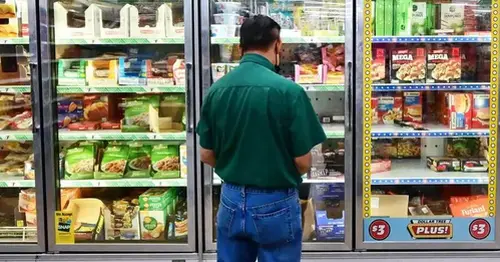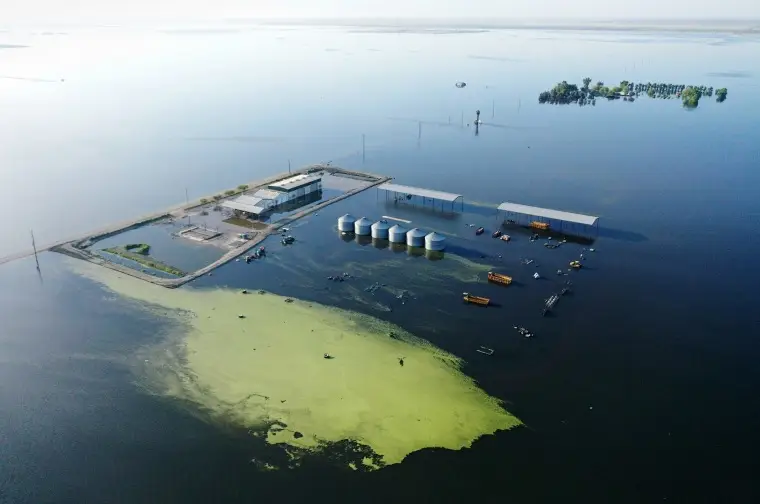
Why are frozen vegetable prices so high? Blame war, immigration and California weather, say economists
Even as U.S. inflation broadly cools, frozen vegetable prices are hot.
The average shelf price for frozen veggies rose by 18% in the past year — the largest increase among all grocery items, according to the consumer price index for June 2023.
Among all consumer goods and services, only a few — like motor vehicle repair, school meals and tax-return preparation — saw prices jump faster in the past 12 months, according to CPI data.
The price spike on frozen veggies is attributable to many factors, like immigration trends, high costs for labor and fertilizer, and ripple effects from the war in Ukraine, economists and food experts said.
Inflation slows to yearly rate of 3%
July 12, 202301:47But perhaps the most consequential event has been unusual weather in California, which is “by far” the biggest supplier of fresh fruits and vegetables in the U.S., said Russell Tronstad, a professor and agricultural economist at the University of Arizona.
Record precipitation ‘provided many challenges’
The Golden State was hit by a deluge of precipitation over the winter. Some areas broke daily rainfall records, and the highest-ever snowpack has been recorded in the Sierra Nevada mountains.
The result: overflowing rivers, mudslides, flooding — and soaked farmland.
“Some areas were just inundated,” which had the effect of decreasing vegetable supply, Tronstad said.
California is the No. 1 national producer for dozens of crops, like broccoli, brussels sprouts, cabbage, carrots, cauliflower, eggplant, kale, lettuce, onions, bell peppers, spinach and tomatoes in processed foods, according to the California Department of Food and Agriculture. It’s the sole producer of crops like celery and garlic.
Overall, the state accounts for nearly half of U.S. vegetable production, according to California Polytechnic State University. It accounted for 42% of total U.S. vegetable sales in 2017, according to most recent data from the Census of Agriculture.
Heavy rain “provided many challenges” for agricultural producers, Pam Knox, an agricultural climatologist at the University of Georgia, wrote recently.
It destroyed crops, delayed planting schedules, and prevented farmers from doing field work for weeks, for example, she said.

War in Ukraine, pandemic effects influence pricing
But weather — and its negative impact on crop supply — isn’t the only contributor to higher prices for frozen vegetables.
“The category is impacted by a variety of external factors,” said Alison Bodor, president and CEO of the American Frozen Food Institute.
More from CNBC
- Victims want Morgan Stanley to answer for ex-financial advisor’s Ponzi scheme
- Amazon to launch pay-by-palm technology at all Whole Foods stores by year-end
- Walmart cuts price of Walmart+ for households that receive food stamps, other government aid
For example, the war in Ukraine is limiting the supply of commodities like wheat, corn and soy, thereby raising prices for the commodities. The higher prices give farmers a “strong incentive” to plant these commodity products over others (like vegetables), a dynamic that could decrease vegetable supply, Bodor said.
“The costs for commodity crops are related and impacted, thus the cost of specialty crops like vegetables also increase,” Bodor said.
Growers and processors are also coping with other factors like the high costs of cold storage, fertilizer and labor, she said.
Prices for all groceries have been pressured in the pandemic era, due to additional factors like supply-chain issues and fuel costs (to transport crops to store shelves). Grocery prices peaked at an annual inflation rate of 14% in August 2022, the highest since 1979. (They’ve since cooled to below 5%).
“We’re still dealing with these ripple effects from Covid throughout the system,” said Trey Malone, a professor and agricultural economist at the University of Arkansas. “I don’t think we’ve established what the new normal is for consumer food purchases.”
Immigration trends pressure supply of farm laborers
Long-term immigration trends are also serving to put upward pressure on labor costs for farmers, economists said.
Fruits and vegetables are known as “specialty crops,” which are labor-intensive to produce since they are often hand-picked, said Zach Rutledge, an agricultural economist and assistant professor at Michigan State University who specializes in farm labor economics.
Labor can therefore account for a large share of a farmer’s production cost, perhaps up to 40%, Rutledge said.
U.S. labor costs have risen at their fastest pace in decades during the pandemic era, as record-high job openings led employers to raise wages to compete for talent.
But farmers face additional cost hurdles. Seventy percent of crop farm workers in the U.S. are foreign-born, according to the 2019-20 National Agricultural Workers Survey; of them, 91% lived in Mexico before arriving in the U.S.
That survey data excludes workers in the H-2A visa program, which the U.S. grants to seasonal farm workers. The number of H-2A workers has tripled over the past decade, and Mexicans received more than 90% of the visas, according to the University of California, Davis.
“The agriculture sector is heavily foreign-born, and heavily from Mexico,” Rutledge said.
Yet that labor supply is under pressure: Until recently, net migration from Mexico to the U.S. flipped negative, starting around the early 2000s. That meant more people left the U.S. for Mexico, reversing decades of positive migration.
Additionally, agricultural labor is “difficult, challenging physical work,” Rutledge said. Some farm workers may have opted for a more pleasant, higher-paying gig elsewhere in a hot U.S. job market — which would further dilute the pool of available workers, he said.
Climate change — and the extreme weather it produces, whether storms in California, drought, or temperate winters that increase populations of invasive pests — also represent a long-term threat to crop prices, Malone said.







